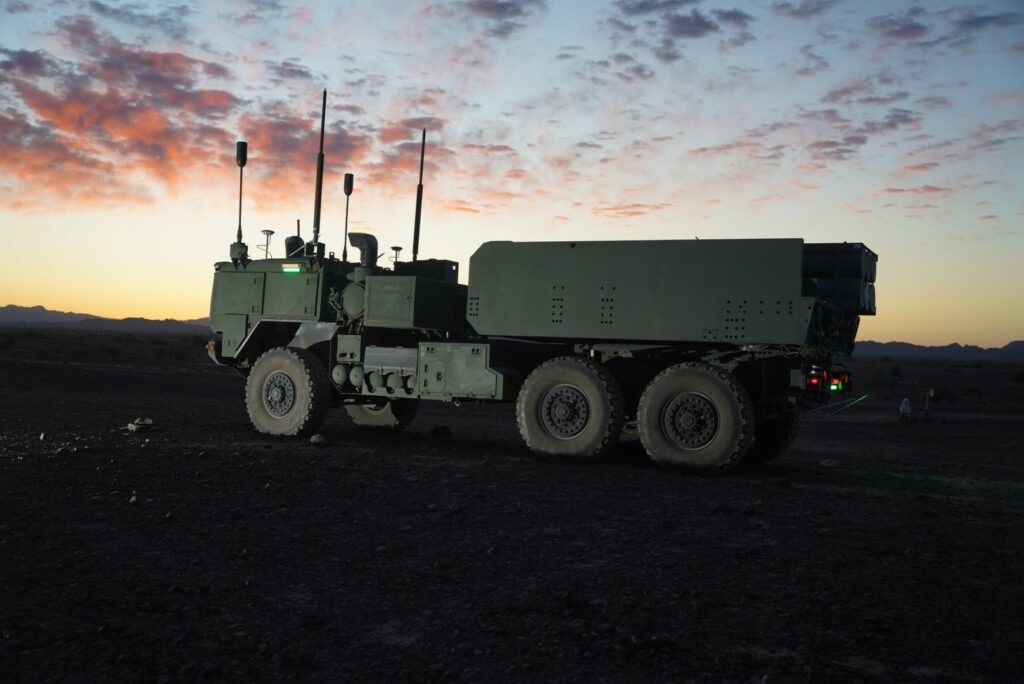The US Army recently demonstrated the Autonomous Multi-Domain Launcher (AML) prototype, which offers increased firepower and magazine depth without the risk of human casualties.
During the event, six reduced-range practice rockets, including three successively, were fired from the modified High Mobility Artillery Rocket System (HIMARS).
The launcher moved on its own from a hidden position to a firing point following a waypoint navigation.
It then remotely received instructions to adjust its direction and fire control commands.


Cabless HIMARS
The cabless AML follows waypoint navigation autonomously, including as part of a convoy.
Moreover, it is designed to use the same ammunition pods as the M142 HIMARS and the M270 MLRS, including various 227mm precision-guided rounds, as well as the Army Tactical Missile System and Precision Strike Missile.
“The AML team leveraged three major Army S&T investments, the Palletized Field Artillery Launcher, Autonomous Transport Vehicle System and Secure Tactical Advanced Mobile Power to rapidly and economically develop the AML prototype,” AML project manager for DEVCOM AvMC Lucas Hunter remarked.
Autonomous Multi-Domain Launcher
The mobile launcher has been in development for the last four years. Its transportability via C-130 aircraft offers increased firepower without a corresponding increase in personnel.
The demonstration paves the way for the launcher’s participation in Valiant Shield ’24 and the program’s transition to the Long Range Precision Fires Cross-Functional Team (LRPF CFT), beginning in fiscal 2025.
Long-Range Precision Fires
The LRPF CFT seeks to deliver “cutting-edge, surface-to-surface fire systems that significantly increase range and effects over currently fielded US and adversary systems,” according to the US Army.
“We are skillfully integrating humans and machines into formations that optimize the natural advantages that both bring,” director of the LRPF CFT Brig. Gen. Rory Crooks stated.
“Our collective efforts allow humans to determine how to best utilize terrain to accomplish the fire support mission while offloading burdens and risk of executing them to machines.”


